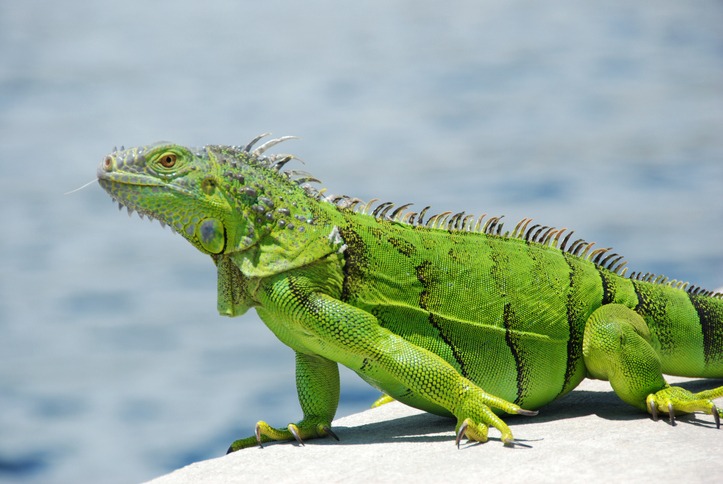The Green Iguana, also referred to as American Iguana, Iguana iguana, Gallina de Palo, or simply Iguana, is a large, arboreal, and primarily herbivorous lizard species endemic to the lands of Brazil, Paraguay, Mexico, Puerto Rico, and other parts of North and South America. This lizard species is commonly found in captivity as a pet because of its calm disposition and colorful skin. If you want to know more about the Green Iguana, make sure to read further!
History
The Green Iguana was first described by Swedish botanist Carl Linnaeus in 1758. Numerous subspecies have been identified since it was described, but these subspecies was later on classified as merely regional variants of the same species.
The Green Iguana is among the most famous reptile pets in the United States despite its demanding lifestyle. Numerous Iguanas die within the first day of captivity, and many are either handed over to reptile rescue groups. Regardless of majority say, Green Iguanas are not suited for beginner hobbyists.
The characteristics of a Green Iguana
Average life span: 20 years in the wild; In captivity, many Green Iguanas die during the first years due to malnutrition and improper husbandry.
Average size: 6.6 feet
Average weight: 11 pounds
The Green Iguana is a massive lizard and is probably the largest lizard species in the Iguana family. It has a row of spines on its back and tail. Its variety of skin textures and scaly beard known as “dewlap” under the chin makes it a little dragon. Despite being named a Green Iguana, not all individuals are green. Its color can vary from blue-green to bright green, red, yellow, gray, pale pink, and lavender. Sometimes, young are born blue in color, but they change color as they age.
The row of spines along its back to its tail helps the Green Iguana to protect it from predators. Its heavy, whip-like tail can deliver painful strikes, and like other lizard species, when grabbed by the tail, the Green Iguana can allow it to break and regenerate a new one.
Green Iguanas have an excellent sense of sight, equipping them with the power to detect shapes and motions from distances. Because they only have a few rod cells, they see unclearly in low-light conditions. At the same time, they possess “double cone cells” that allow them to see ultraviolet wavelengths, which is a useful skill when basking to ensure that it absorbs enough sunlight to produce vitamin D.
Caring for a Green Iguana
This species may be a famous pet lizard, but it needs a complex environment and dietary requirements. It takes a lot of time and patience to bathe it, give it exercise, and prepare its aliment. Indeed, taking good care of a Green Iguana is a long-time commitment.
As a diurnal and arboreal reptile, the Green Iguana is an excellent swimmer that will often jump from a branch from meters high into a river splash-down. It grows quickly, and it does not usually want to be handled. It has dangerous tails and claws that can inflict lashing injuries.
Housing a full-grown Green Iguana would require more room when it did when it was young and only a foot long. Most adult Green Iguanas need half a small bedroom and a very large enclosure that is 8 ft long, 8 ft tall, and 4 to side ft wide. If you can’t provide a small bedroom for your pet Green Iguana at home, you can build your custom cage or purchase a ready-made built enclosure. Make sure to provide hefty branches and perches to climb on. Bathe your pet and enclosure accessories regularly to avoid the accumulation of harmful microorganisms.
As natives to tropical environments, Green Iguanas would require temperatures between 80 F to 95 F to stay healthy. You can offer heat through lights and basking lamps. Make sure these heat providers do not come close on rock surfaces as they can burn your pet. The basking point should be around 95 F, while the enclosure temperature should not drop below 78 F.
Green Iguanas mainly feed on fruits and vegetables. Dark leafy greens such as kale, endive, dandelion greens, mustard greens, and fresh parsley should make up most of its diet. They swallow food whole, so make sure to chop all food items into smaller pieces. Do not feed your Green Iguana excessive meat, as this can cause severe kidney problems and even premature death.

